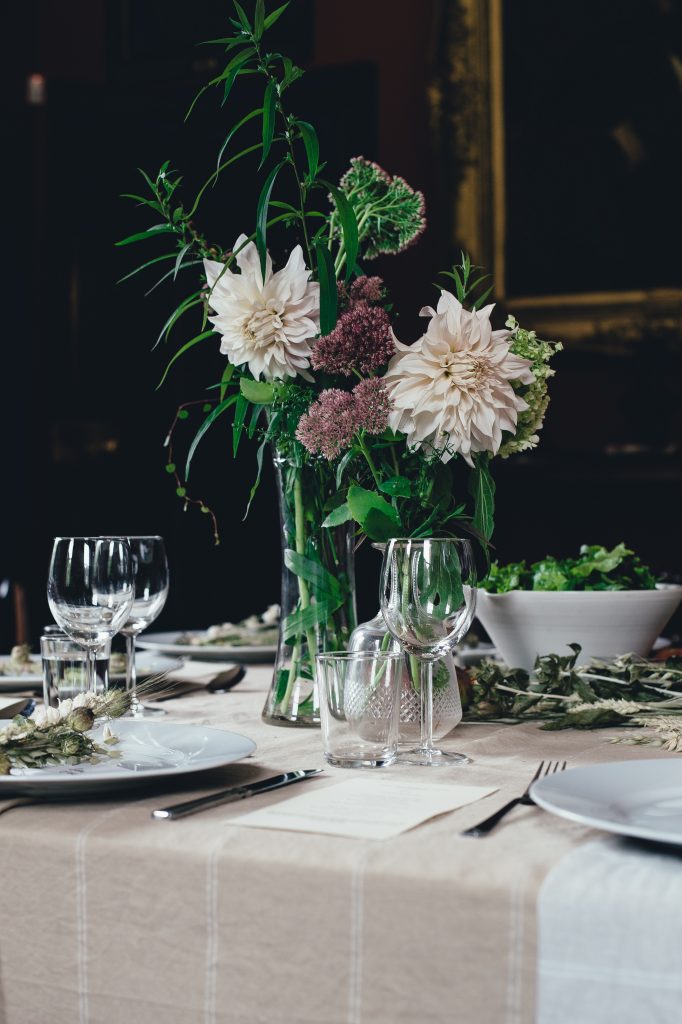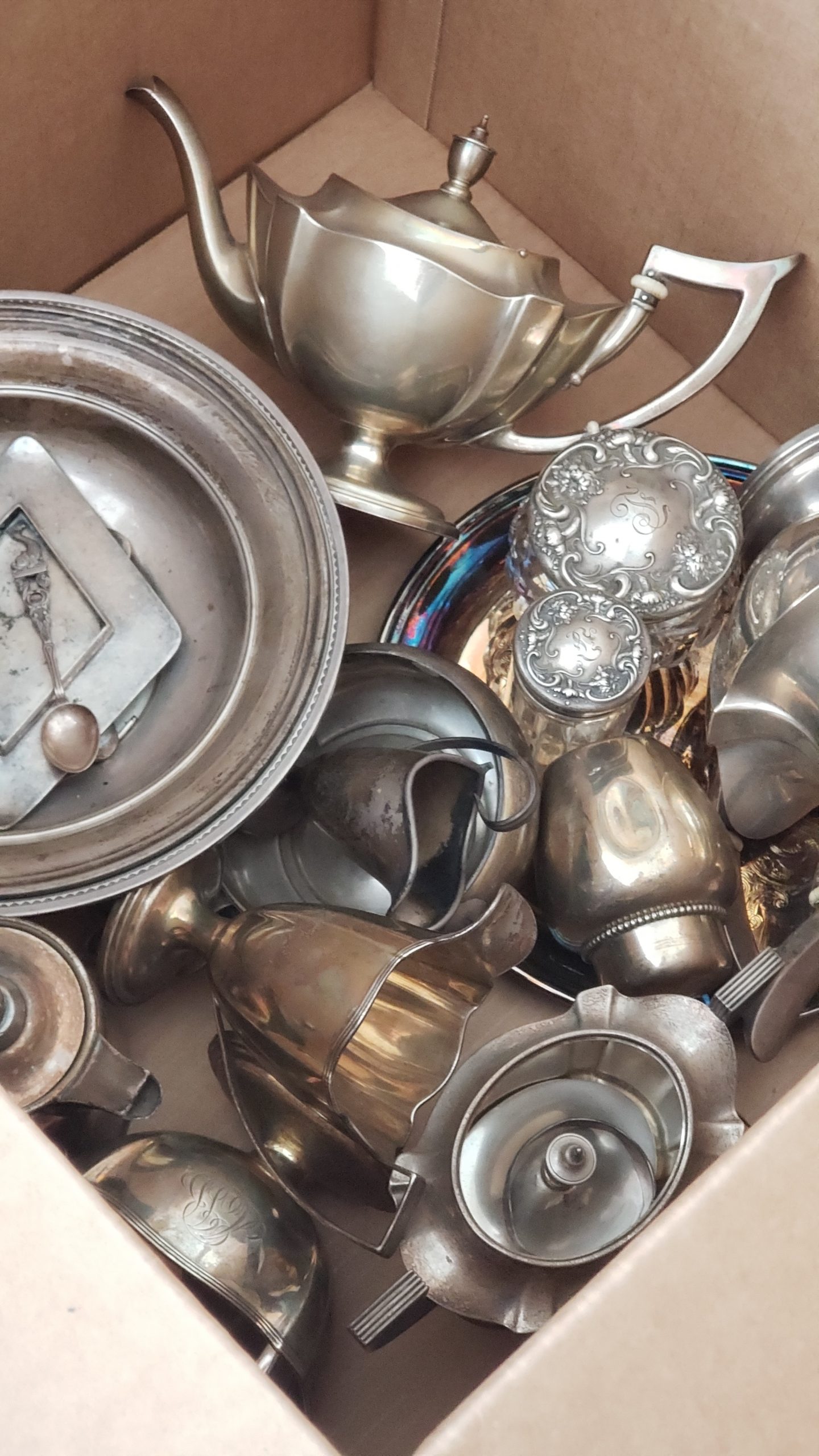By MLE Organizer Grace
Sunday dinners at my Great Grandmother’s house were always a special occasion. She brought out all the stops when setting the table: handmade lace table runners, fine china and the good silverware. Great Gran took the same approach in her personal appearance. Her everyday dress was replaced with her Sunday best. Even her kitchen apron had fancy touches like ruffles or embroidery. She wore her good jewelry regardless of whether she had actual dinner guests or just our family.
At the end of the meal everything was carefully cleaned and put away for the next week. Any silver with a hint of tarnish was polished immediately, before being returned to its velvet-lined case. Her jewelry was also inspected, shined and stored carefully. Even the copper-bottomed pots were given a once-over before being hung on the rack above the stove.
Now we only use the silver at the holidays. With our busy schedules, proper cleaning and storage of it is even more important. Who wants to spend hours on such an onerous and time-consuming chore?
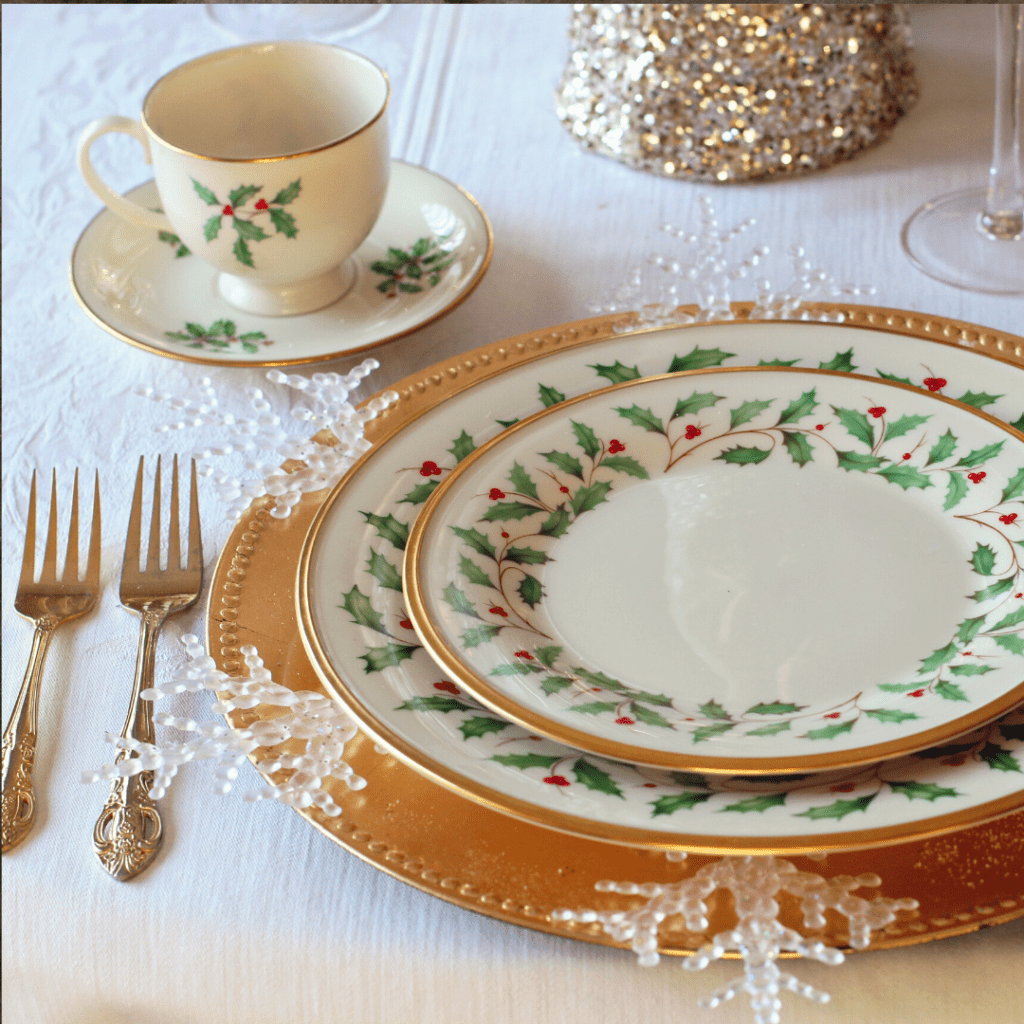
Understanding Tarnish
Tarnish is a layer of corrosion caused by a chemical reaction between the metal, oxygen, moisture, sulfur and oils in our skin. Silver in particular reacts with sulfur which can be found in wool, felt, petroleum-based oils, latex, and foods such as cruciferous vegetables, eggs, onions, organ meats, aged cheese, and mayonnaise.
On silver, tarnish can appear dull grey, brassy, black or even iridescent blue. The effect only covers the surface of the object, but repeated tarnishing over time can cause permanent damage to silver-plated items.
Silver may seem fussy, but a bit of maintenance can keep everything shining brightly. Silver has basic rules that are pretty easy to follow:
- Clean carefully
- Polish gently
- Store properly
Cleaning Silver: No abrasive cleaners, no dishwasher
When cleaning silver it’s important to remove any oils, food residue and tarnish without scratching the piece. Toothpaste, baking soda and dishwasher detergent are often touted as “safe” cleaners, but each contains abrasive materials that can pit or scratch the silver. This not only reduces the shine and can remove silver plate but also creates spaces that are harder to clean and easier to tarnish.
Another cleaning method purported as non-toxic involves placing tarnished items in a water bath with aluminum foil and baking soda. Although this doesn’t involve scrubbing with abrasives it still can cause pitting. In addition, this chemical reaction caused by this process off-gasses hydrogen sulfide which shouldn’t be inhaled.
To safely clean silver, use a mild dish soap and a soft dishcloth. Clean as soon as possible after use; rinse well, and dry immediately.
Polish early and gently
Since fancy silverware often has ornate designs, letting the tarnish go too long makes the cleaning process more difficult. It is easier to polish away light tarnish than heavy tarnish. Spending a few minutes with a couple of dulling pieces is less work than cleaning a large quantity of darkened ones.
Store properly
The keys to proper storage are tarnish-resistant containers or silver-cloth, and low humidity. That fabulous wooden silver-chest with nooks for each type of utensil is the perfect place to store flatware. It has a tarnish-resistant lining and a relatively tight closure to prevent air flow. If it resides in a humid area, add a packet of silica beads to help control moisture. Look for a brand with a color-changing component that indicates it should be replaced, or schedule a replacement every three months.
Silver cloth is a flannel material impregnated with microscopic silver or zinc particles. The idea is that the tarnishing compounds stop on the cloth and don’t make it to the treasures inside. Silver-cloth is available in ready-made bags or as fabric by the yard.
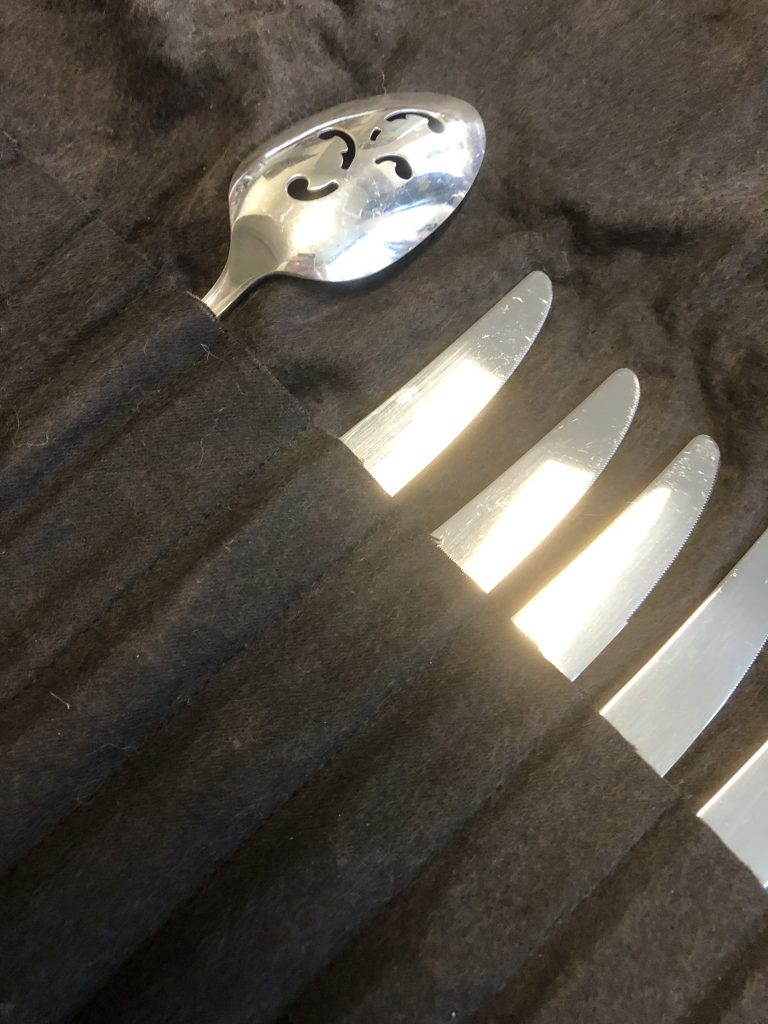
Plastic bags do not prevent air from coming in contact with the metal and can add their own set of oils or chemicals to the mix. Silver items may be shipped in plastic to prevent scratching in transit but should not be kept in the shipping materials. Non-archival paper such as newsprint, packing paper, cardboard, and paper towels contains acids which can accelerate tarnishing. Newspaper and rubber bands can also contain sulfur which should be avoided.
How to Polish Silver
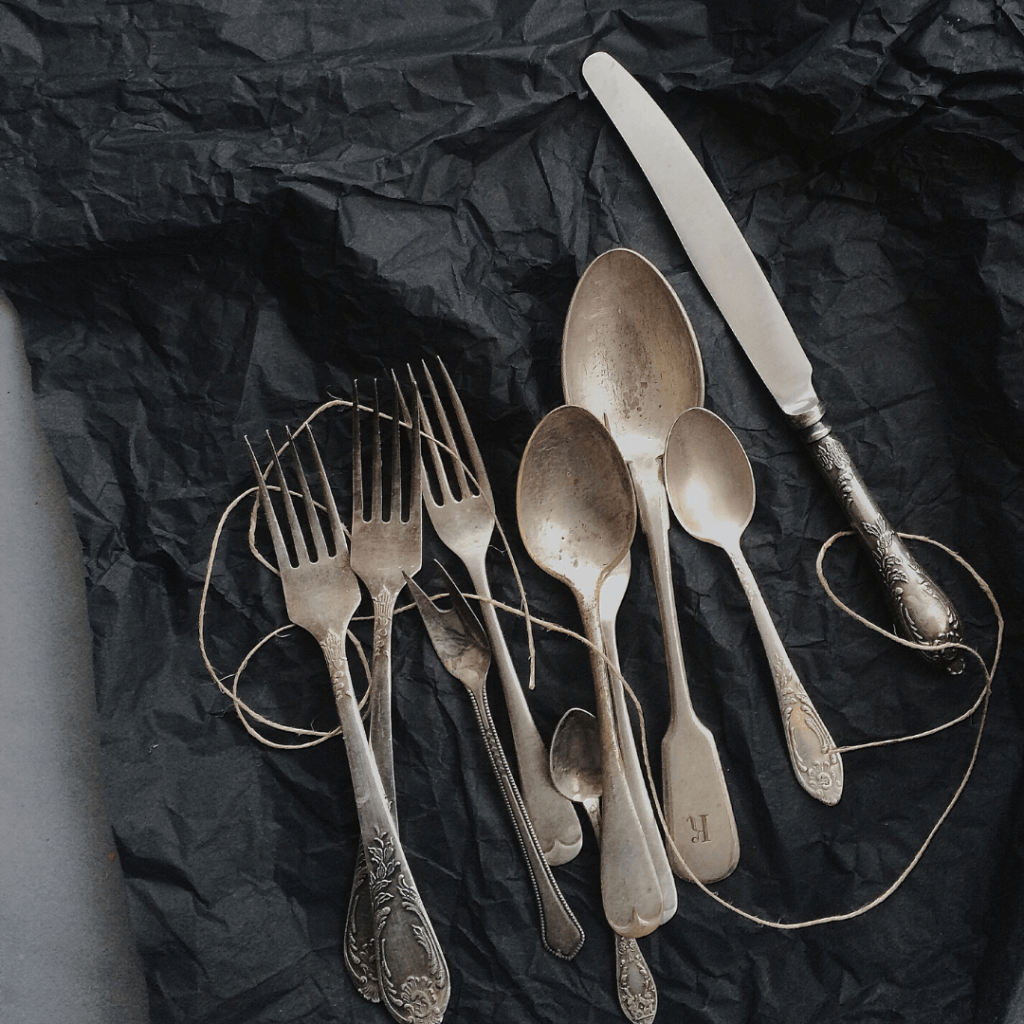
- Set up your work area such that you separate pieces in each of the stages of the process. Unpolished items should be clean and dry.
- Polish: Put on vinyl or latex gloves to protect your hands from the polish and resulting tarnish. Use a polish formulated specifically for that metal, such as Wright’s Silver Cream or Cape Cod products. Work gently with a soft cloth. (Old t-shirts work well; keep in mind that the removed tarnish may stain the cloth permanently.) Pay attention to the negative space in your pattern: Do you want to leave some patina to show the design, or should the whole piece be gleaming silver? Once items have been polished sufficiently to remove the tarnish, place them in the buffing station.
- Buff: Remove your synthetic gloves and put on white cotton knit gloves, work gloves or lintless photo gloves. Use a clean, soft cloth to buff each piece. Buffing removes remaining polish and creates that final shine. If tarnish was light this should be the final step and the buffed items should be ready to put away. If tarnish was heavier or a spot was missed, set it with the unpolished items and repeat Step 2.
- Put away: Putting items away should be done with clean, dry hands. You may want a second pair of cotton gloves for this step. When you’ve buffed an item and it shines to your satisfaction, place it on a plate, container, or mat away from the cleaning area so that any leftover residue from buffing doesn’t re-contaminate the finished items. From there, you’ll put them in their special storage box, drawer or bag.
At my Great Gran’s one of us would do the polishing and the other would do the buffing. If there aren’t a lot of pieces this can just be done by one person, but why not make a game of it? I can see various family members competing for bragging rights of who’s better or faster.
Summary
While caring for silver may seem fussy, it’s really not hard. Taking the extra time to polish and buff invites us to slow down, appreciate quality and beauty, savor memories, and create new ones. Using your silver can be one way to let your family and guests know how special they are!
